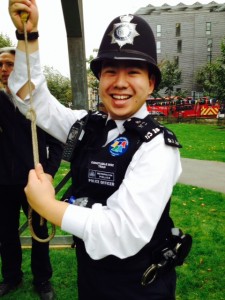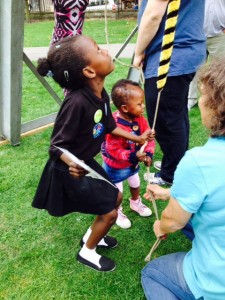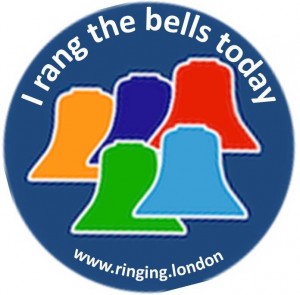Well, almost a Bermondsey Tuesday night band – Morag is still recovering from her accident and hip operation, but Tony Faulkner from Poplar stood in to enable us to score the quarter at Isle of Dogs on Sunday evening!
A previous attempt at Rotherhithe a fortnight ago was not successful, and we had met an hour and half below the service to allow time for a false start, but we scored the quarter without stopping. This meant that we finished almost half an hour before the service and needed to ring up to it. It was the first of Cambridge Major inside for Colin.
Over the coming months we plan to arrange a regular programme of quarters and special practices at Rotherhithe and Isle of Dogs to enable more of our Tuesday night band (e.g. Ashley, Eva, Drew, Jonathan and Rob), to progress and score quarters of Grandsire/Plain Bob Triples and Plain Bob Little Bob, and Kent Treble Bob Minor/Major, working towards ringing Cambridge on the treble and possibly inside. We also need to arrange some more of Cambridge Major, so that we can ring it without any trips and polish our 8 bell striking.
In the longer term, once we have grown the pool of people who can ring these methods confidently, we can introduce other methods such as Yorkshire into the regular repertoire, but we will be careful not to spread ourselves too thinly, or run before we can walk. Maintaining a surprise band is like a pyramid and this needs to be built on firm foundations, otherwise it becomes too slender and can collapse. However we have a number of other people at the base and we look forward to scoring quite a few doubles quarters with them too.
http://www.bb.ringingworld.co.uk/view.php?id=359332





